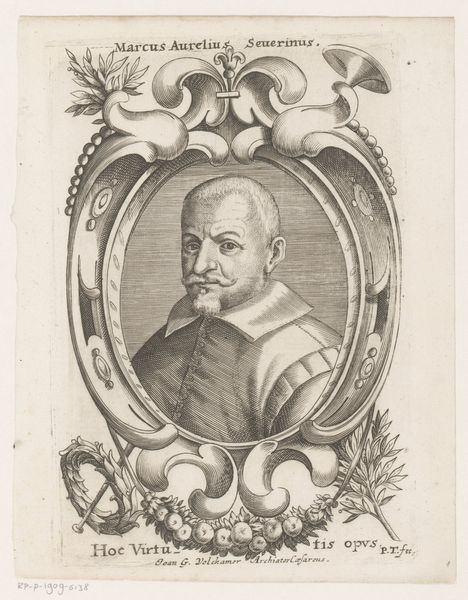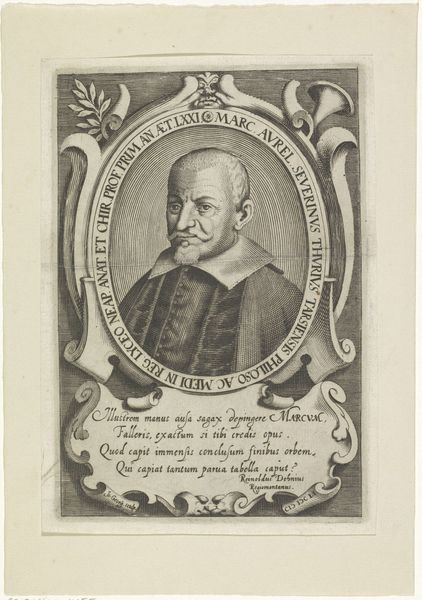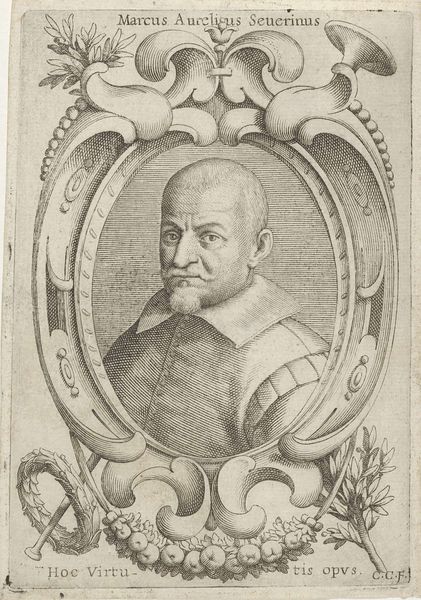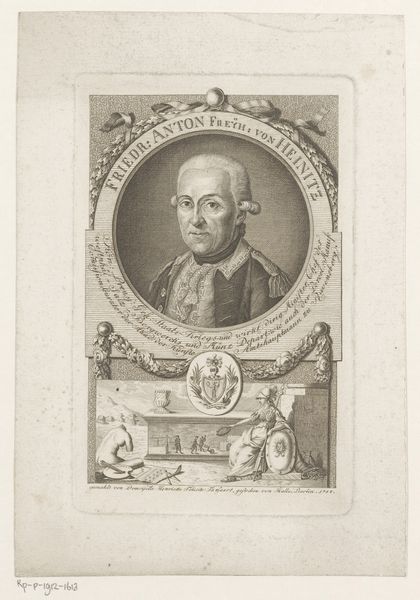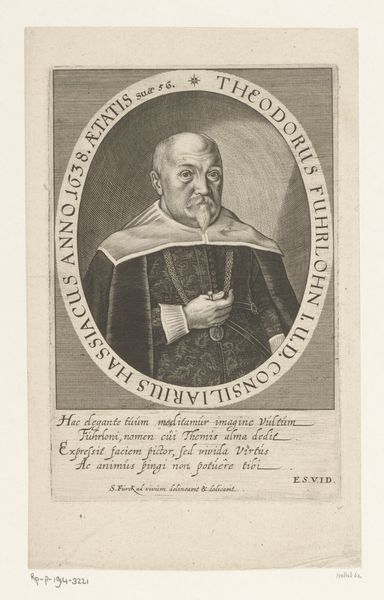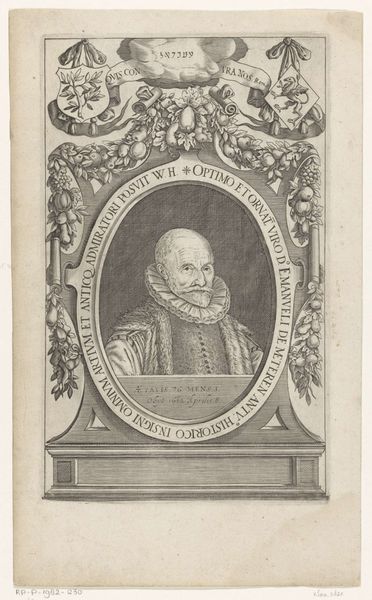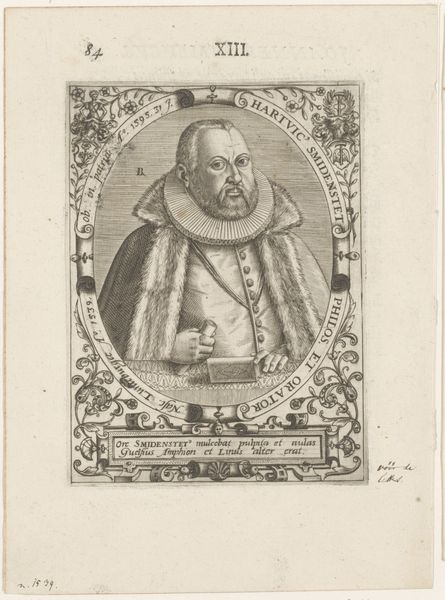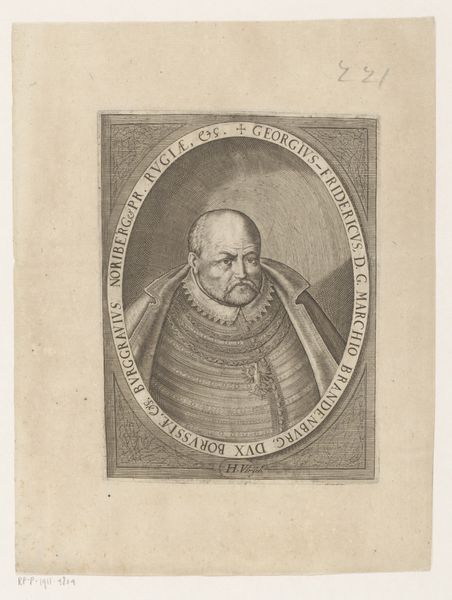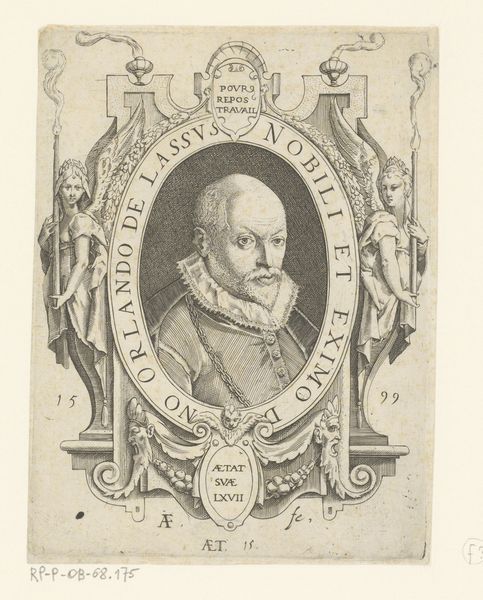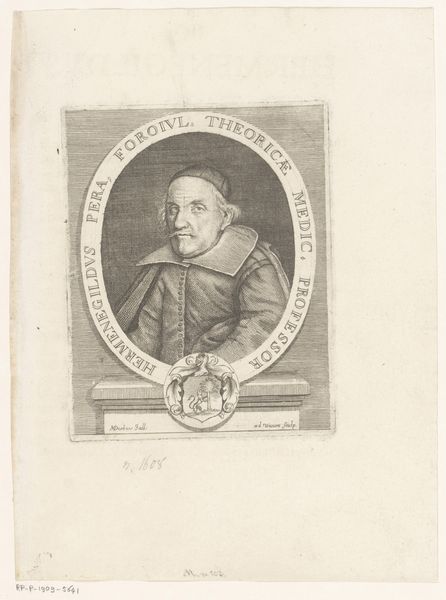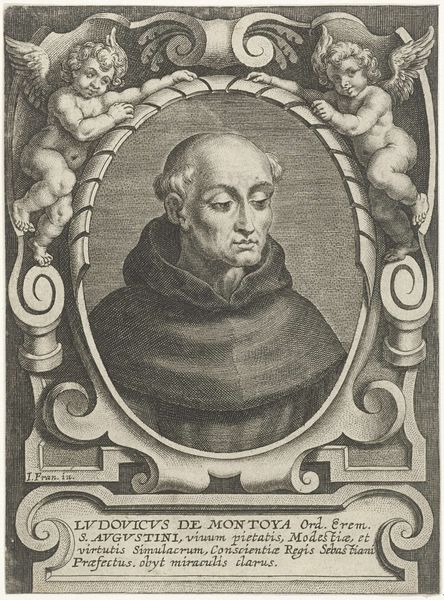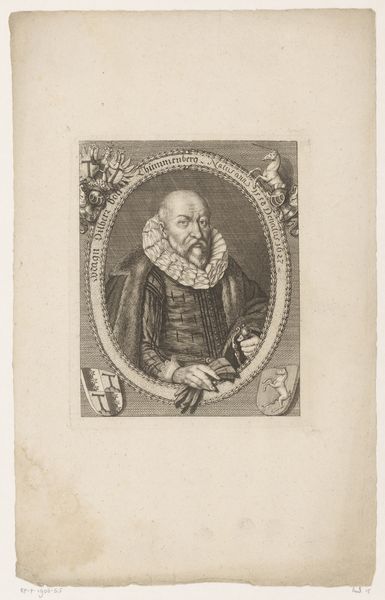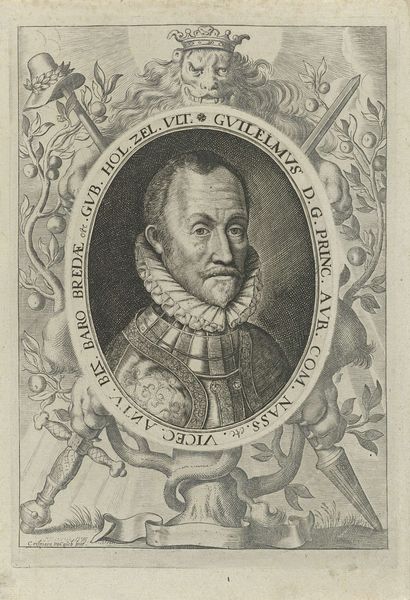
engraving
#
portrait
#
baroque
#
old engraving style
#
caricature
#
history-painting
#
engraving
Dimensions: height 175 mm, width 140 mm
Copyright: Rijks Museum: Open Domain
Curator: Here we have an 18th-century engraving titled "Portret van Marcus Aurelius Severinus," by Andrea Magliar. What are your initial thoughts? Editor: A formidable presence! The subject's gaze is piercing, though somewhat undermined by the almost cartoonish rendering of his features. The Baroque frame clashes with the man’s rigid austerity. It gives off a bizarrely humorous effect. Curator: Notice how the engraver masterfully uses fine lines to create texture and depth, particularly in the face and clothing. The oval frame is adorned with ornate vegetal flourishes. This classical ornamentation contrasts vividly with the plain inscription at the bottom. It seems as though there’s tension in the deliberate juxtaposition. Editor: The inscription "Hoc Virtutis opus" translates to "This is a work of virtue", an ironic assertion, if we examine the subject. Marcus Aurelius Severinus was a 17th century vivisectionist; how can we reconcile "virtue" with his brutal experiments? Can we, as viewers, accept the artistic skill divorced from the ethics of the sitter? Curator: But consider the artistry. The composition is strong, the tonal range subtle, with impeccable rendering and delicate modeling of the facial features. I find a remarkable level of craft within the strict parameters of the medium. Editor: I appreciate the technical skill. Still, my attention is directed towards the social function this portrait served. It normalizes a person complicit in animal cruelty and inscribes that in art historical memory. Why memorialize scientific advancements that cost other creatures their lives? How do we approach it from an eco-critical lens? Curator: An interesting point, and something for the viewer to reflect upon. On the one hand, this engraving is a document of its time, a reflection of aesthetic ideals. On the other, we have its legacy and continued impact. Editor: Ultimately, this piece highlights art’s capability to immortalize and, conversely, its responsibility in challenging our understanding of ethics and history. We see what was considered commendable for its time, but also invites inquiry and questions of our time.
Comments
No comments
Be the first to comment and join the conversation on the ultimate creative platform.
